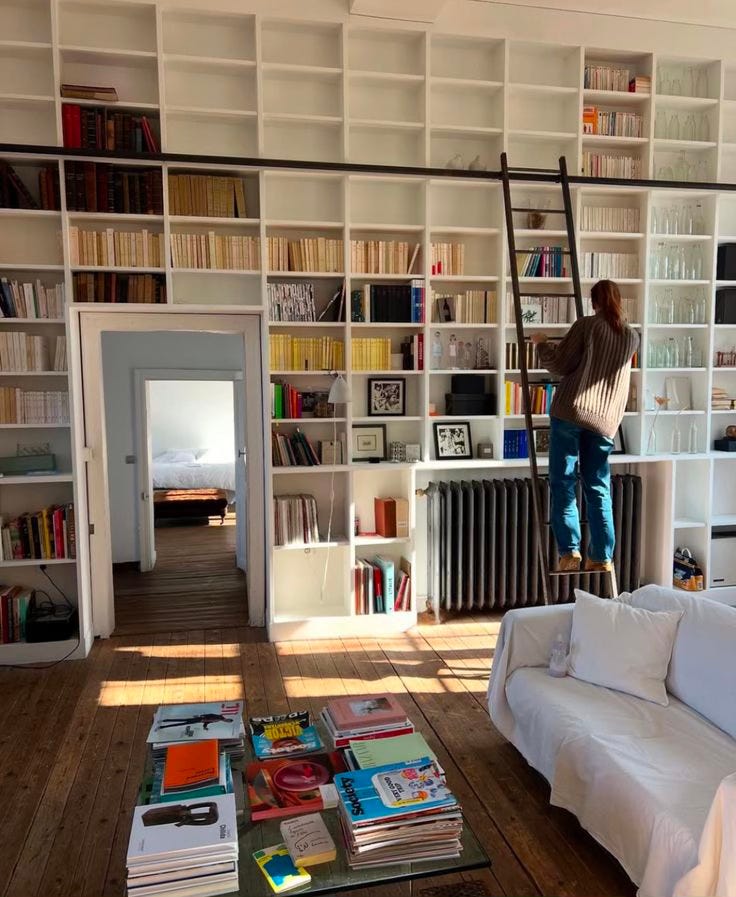Re: Building a home library
Questions you can ask to get to know your books through space, and your space through your books
Hi everyone,
For nearly a decade, I practiced as an architect and interior designer in New York and London. However, my real home is in editorial work, having made the full transition about a year and a half ago to dedicate myself fully to editing. (And I love it!)
That being said, I still very much enjoy interior design in a more social, leisurely capacity. And to be very honest, I even miss it sometimes. But this newsletter often becomes my outlet for that side of my practice.
Today’s newsletter is about how to build and style a home library. The home library for me is a warm emergence as it brings together the two worlds I care about the most. And so I approach this subject through both an editorial and design lens: how to develop a curated collection as much as how to think of the design spatially. Here’s what you’ll find inside:
Different spatial and practical arrangements
How to collect books, items, and objects that go into that library
How to shape it stylistically (decorate, reflect, or find your interior “voice”)
Where to look for inspiration, both inside and outside the home
SPACE
If you’re starting truly from scratch, start with choosing where your library will be. Think of the rooms in your home, but also think beyond it. What does a library mean to you, what will it bring to your space, and what purpose do you want it hold: is it (also) a background for your Zoom calls? Is it a decorative wall treatment where you also store other home items? Is it something private tucked away in your bedroom, a research nook in your study, or decorative item to animate the living room? Think of surfaces as much as rooms—the alcoves, transitionary spaces, and architectural features it can integrate to.

I like this spatial decision which is a good example of how you can get creative depending on the limitations and needs of your space. Here the library becomes both a partition between two spaces (kitchen and living room)—probably solving a design problem of its own—and utilizes an existing depth that might not be available elsewhere.



